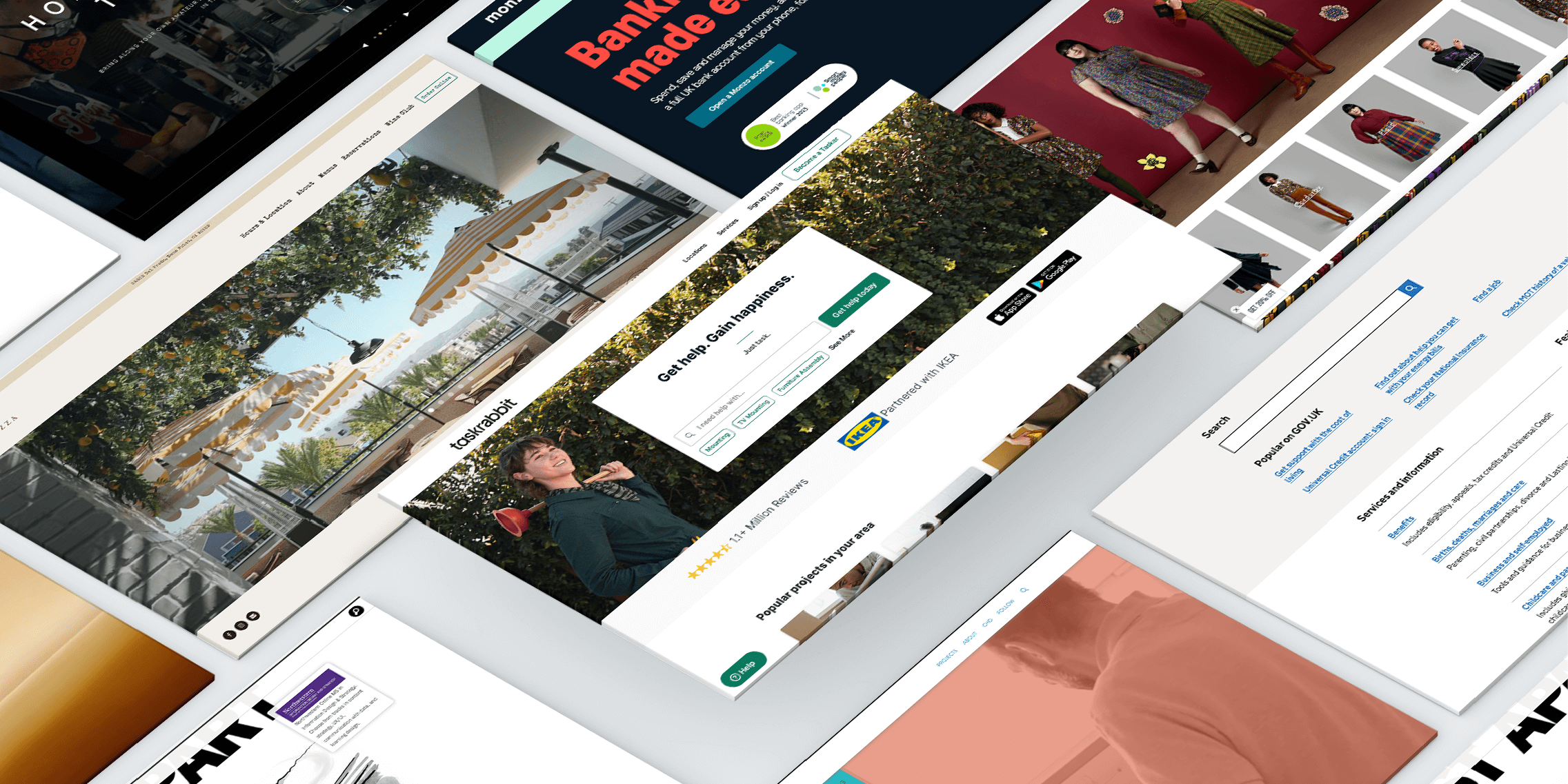In everyday communication, tone of voice has a major impact on how you interpret a message—and how it makes you feel.
Imagine you invite several friends to your birthday dinner and ask them to RSVP.
One replies with “Yep. I’ll be there.” Another replies with “Yay! Can’t wait. See you later! 🥳”
Both friends are essentially confirming their attendance, but one friend sounds decidedly more enthusiastic. That’s because of the difference in tone.
The same goes for UX writing. The tone of voice you use throughout the product interface determines how the user feels as they engage with the product.
The right tone of voice can help to gain the user’s trust, evoke positive emotions, and ensure a smooth user experience overall.
But what exactly do we mean by ‘tone of voice’ and how is it expressed in UX writing?
Keep reading. We’ll cover everything you need to know, including how to define a strong tone of voice that resonates with your users and aligns with the brand identity.
What is tone of voice in UX writing?
First things first: what is UX writing?
UX writing (also known as content design) is the process of writing text for digital product interfaces. It incorporates everything from error and confirmation messages to button labels and onboarding instructions.
The goal of UX writing is to create clear, concise messaging that guides the user and enhances their experience. Any text featured within the product interface should help the user to seamlessly navigate the product and complete their desired tasks.
It’s like a conversation between the product and the user, providing appropriate feedback, reassurance, or instructions depending on the context.
And what is tone of voice in UX writing?
Tone of voice in UX writing describes the overall personality, style, and mood conveyed by the product messaging.
It’s shaped by factors such as word choice (e.g. formal vs. casual language), sentence structure (e.g. short, direct sentences vs. detailed, descriptive ones), the use of active vs. passive voice, and punctuation (e.g. an exclamation mark vs. a full stop at the end of a sentence).
Let’s say you’re crafting an error message for a playful, lighthearted, and uplifting fitness brand. Your UX copy might read something like this:
“Oops! Looks like we’ve hit a bump in the road. No sweat—let’s get back on track. Double-check and give it another shot.”
Now consider an error message for a more serious financial brand where trust and authority are key. You might craft a message like the following:
“Your details appear to be incorrect. Please review and re-enter your account number, or contact support for assistance.”
Both of these messages communicate an error, but they have completely different tones—conveying a distinct brand personality and evoking different emotions in the user.
That’s the power of tone in UX writing, and it has a huge impact on the user experience. With that, let’s take a closer look at why tone of voice matters.
Why is tone of voice important in UX writing?
Tone of voice is one of the most important aspects of UX writing. It helps to support, guide, and engage the user, both enhancing the usability of the product and reinforcing the brand identity.
Tone of voice contributes to a positive user experience by:
- Building consistency and trust: A clearly defined tone of voice helps to ensure consistency throughout the product, making it easier to establish familiarity and credibility, and gain your users’ trust.
- Guiding and influencing user emotions: The right tone of voice has the power to ease frustration, provide reassurance, and add a bit of fun or joy to the experience—fostering an emotional connection with your audience.
- Enhancing usability: Tone of voice can make it easier for users to understand different types of content and contexts within the product. Tone of voice can indicate when something’s gone wrong, for example, or motivate the user to take the next step.
- Creating and reinforcing a strong brand identity: Tone of voice helps to capture and communicate the brand’s personality, creating a unique and memorable experience that differentiates you from competitors.\
- Entertaining and engaging the user: A tone of voice that resonates with your audience will encourage them to keep using the product, return to it in the future, and maybe even recommend it to their friends. This is great for user engagement—and for the business.
We’ve explored what tone of voice is in UX writing and why it matters. Next, let’s consider what ‘voice’ and ‘tone’ actually mean and how they differ.
Voice vs. tone: what’s the difference?
So far, we’ve talked about tone of voice as a whole. However, it’s important to note that ‘voice’ and ‘tone’ are two distinct pillars. They work together to shape the user experience, but they each serve a different purpose.
Voice reflects the personality of the brand, and it remains consistent and unchanged. It’s the “who” behind the product, defined by qualities and characteristics that the brand wants to be known for—such as friendly, playful, professional, trustworthy, or humorous.
Tone, on the other hand, conveys mood, and it can vary depending on the context. Tone refers to how the brand voice is expressed in specific situations, and it adapts according to the kinds of feelings and emotions you want to evoke. A brand with a friendly voice might use a cheerful tone in a welcome message, for example, but a calm, reassuring tone in an error message.
The four dimensions of tone of voice (with examples)
When writing content for a product interface, you need to consider both tone and voice. As we’ve established, voice stays the same no matter what, but tone can be varied to suit the context.
Nielsen Norman Group outlines four dimensions that shape tone of voice:
- Funny vs. serious: If your tone is leaning towards the ‘funny’ end, you’re communicating with humour, playfulness, and lightheartedness. Towards the ‘serious’ end of the spectrum, your tone will feel more sombre and businesslike.
- Formal vs. casual: This dimension describes whether you take a more professional tone, or if you address your audience in a more familiar style.
- Respectful vs. irreverent: A more respectful tone might err on the side of politeness or deference, while an irreverent tone tends to be more quirky or edgy.
- Enthusiastic vs. matter-of-fact: This dimension reflects the level of energy, emotion, or excitement in the message. A more enthusiastic tone might use emotive language and exclamation marks, while a matter-of-fact tone is more straightforward and neutral.
Each dimension represents a spectrum, and you can dial them up or down to vary the tone of your message.
Let’s try this with an example. Imagine you’re writing for a fitness app and you want to craft the message your users receive after successfully completing a workout.
How might the tone change with each dimension? Consider the following:
Funny vs. serious
- Funny: “Nailed it! You crushed that workout like a boss 💪Keep it up!”
- Serious: “Congratulations on completing your workout. Keep going to reach your goals.”
In the funny version, playful language, an emoji, and exclamation marks make the achievement feel exciting and fun. In the more serious version, the tone is straightforward and no-nonsense.
Formal vs. casual
- Formal: “Well done on completing your exercise session. Your progress has been recorded in your profile.”
- Casual: “Great job! Your workout’s been logged—keep up the awesome work.”
The formal version is more polite and professional, emphasising careful word choice and a complete sentence structure. The casual version feels relaxed, friendly, and approachable.
Respectful vs. irreverent
- Respectful: “Great work! You’re building strength and resilience every day. Keep moving forward at your own pace.”
- Irreverent: “Boom! Another workout done. What’s next? A world record?”
The more respectful version acknowledges the user’s fitness journey and takes their progress seriously. The irreverent version is bold and tongue-in-cheek, exaggerating the user’s achievements for a more playful, entertaining tone.
Enthusiastic vs. matter-of-fact
- Enthusiastic: “Amazing! You did it! You’re one step closer to your goals—keep that momentum going!”
- Matter-of-fact: “Workout complete. Your session has been logged in your user dashboard.”
The enthusiastic version is full of energy and excitement, using emotive language and exclamation marks for a celebratory tone. The more matter-of-fact version is direct and neutral, acknowledging the user’s achievement without any emotion.
As you can see from these examples, you can use the four dimensions to tailor your tone to different user groups and contexts. This is crucial for resonating with your audience and eliciting the right emotions throughout the user journey.
How to define your tone of voice in UX writing: 7 steps
1. Define your brand personality
Start by defining the core personality of your brand. This will shape your ‘voice’ in UX writing, and it should reflect what your product stands for—as well as how you want people to feel when they encounter the brand and the product.
Let’s say you’re defining the tone of voice for a dog-sitting app that helps dog owners find reliable, responsible dog-sitters in their local area.
First, outline your core brand values—for example: trust, compassion, and reliability. Then brainstorm adjectives that bring these values to life. You can think of these adjectives as personality traits or characteristics you might use to describe your brand if it were a person.
For example:
| Brand values: | Related adjectives / characteristics: |
| Trust | Dependable, reliable, transparent |
| Compassion | Friendly, understanding, warm, welcoming |
| Reliability | Professional, consistent, knowledgeable |
In this example, we’ve created a core brand personality that’s friendly and warm yet professional and trustworthy—aiming to make users feel supported and reassured in their search for a dog-sitter.
This is the overall voice that should consistently shine through whenever you’re crafting content for the dog-sitting app.
2. Understand your audience
With your voice defined, it’s now time to think about how you’ll express that voice to your audience.
To build a tone that resonates, you need to understand who your users are and what they need. In the case of our dog-sitting app, you’re writing for dog owners who need reliable dog-sitters; someone they can trust to care for their beloved pet while they’re at work or on holiday.
What kind of mindframe will they be in when they first use your app? Are they nervous about leaving their dog with someone new and unknown, as well as excited or optimistic about the prospect of finding a reliable sitter and enjoying more freedom?
If you haven’t done so already, conduct user research to pin-point your target users’ needs, goals, and challenges. If you’ve already got user research and UX personas to hand, refer back to them as you think about your tone of voice.
This step is all about empathising with your audience and considering what kind of tone will resonate most—important preparation for upcoming steps in our guide.
3. Conduct competitor research
A distinctive tone of voice is crucial for guiding and engaging your users. It also enables you to stand out from competitors and create a memorable experience that sticks in people’s minds.
As such, it’s important to know what you’re up against. In other words, how are your competitors using tone of voice to resonate with their users?
Analyse competitor apps and websites to see what tone of voice they use. Are they informal and playful, or professional and serious? Emotive and excitable or matter-of-fact?
This step will help you identify common approaches within the industry, giving you insight into what your audience is already familiar with. At the same time, it helps to pin-point opportunities to differentiate and stand out.
If your competitors are typically playful and lighthearted, for example, you might choose a more compassionate and professional tone to stand out as a caring and trustworthy choice.
4. Define your tone across the four dimensions
Now that you’ve defined your brand personality (voice), assessed your competitors, and empathised with your target audience, it’s time to set the tone for your product by positioning it along the four key dimensions of tone of voice.
These dimensions—funny vs. serious, formal vs. casual, respectful vs. irreverent, and enthusiastic vs. matter-of-fact—help to create a foundational tone that aligns with your brand voice.
For each dimension, decide where your tone should generally sit to reflect your brand values and connect with your audience. Think of this as the baseline for your tone of voice—something that feels consistent throughout the product, with the flexibility to be dialled up and down in different contexts.
Let’s think back to the brand values and characteristics we outlined for our dog-sitting app (in step 1 of this guide) and consider where our tone should sit on each dimension. We’ll express each dimension as a percentage:
- Funny (25%) / serious (75%): Trust and reliability are core brand values for our dog-sitting app, so a more serious tone will help to convey the necessary professionalism and assurance. A small touch of humour will make the app feel friendly and approachable without undermining trust.
- Formal (30%) / casual (70%): We want the tone for our dog-sitting app to convey compassion by feeling friendly, warm, and welcoming. A more casual tone will help users feel comfortable when using the app, with some room for formality in the appropriate contexts (e.g. when discussing safety and privacy).
- Respectful (90%) / irreverent (10%): Trust is crucial for our dog-sitting app, and it’s essential that pet owners feel like we’re taking their dogs’ care and well-being seriously. The tone should mostly err on the side of respectful and considerate.
- Enthusiastic (60%) / matter-of-fact (40%): We want to convey warmth, friendliness, and compassion, so the tone is slightly more enthusiastic. However, a degree of matter-of-factness is still necessary to communicate reliability and clarity in certain contexts.
Just as we’ve done for our dog-sitting app, list out the four dimensions and decide where your tone falls for each one—relating back to your brand personality and values.
5. Consider how tone should vary in different scenarios
You’ve established the baseline for your tone of voice. Next, you’re going to fine-tune your tone for different touchpoints throughout the user journey.
Think about all the different scenarios and contexts your users will encounter when using the product, and how they’re likely to be feeling in each situation.
Then consider how you want them to feel. How can you adjust your tone of voice to support the user, evoke the desired emotions, and guide them through their journey?
When first downloading the app and signing up, for example, new users might feel nervous and unsure. Here you’d want your tone to be welcoming and reassuring, so you might focus on being serious and respectful, but also warm and friendly.
When booking a dog-sitter for the first time, they might feel both excited and apprehensive. In this case, you’d want your tone to convey confidence and reliability while also exuding optimism and joy.
List out each key step in the user’s journey, describe their emotional state at this moment, and then come up with a few adjectives to describe the tone you want to convey. This will guide you when crafting specific product messaging, helping you choose appropriate language, sentence structure, and punctuation.
6. Choose language and stylistic elements
Now it’s time to bring your voice and tone to life. Decide on specific language features and stylistic elements that reflect your tone of voice, considering:
- Plain language vs. technical terminology
- Emotive vs. neutral language
- Active vs. passive voice
- Use of punctuation (especially exclamation marks)
- Sentence length and structure—consider the impact of longer, complete sentences vs. short, snappy ones
- Emoji use—will you use emojis sparingly, liberally, or not at all?
Let’s return to our dog-sitting app example. Our general tone is mostly serious, casual, respectful, and enthusiastic, and we want to use our tone of voice to convey that we’re dependable and professional yet warm, friendly, and welcoming.
Now let’s write a message to inform the user that they’ve been matched with a suitable dog-sitter. We’ll create two different versions to illustrate how language and stylistic choices can completely transform the tone:
| Version 1: | Version 2: |
| Your request for a dog-sitter has been processed and we’ve assigned a suitable match based on availability and location. You can view the dog-sitter’s profile in your dashboard. | We’ve found the perfect dog-sitter for you! 🐶 Check out their profile to see why we think they’re a great match for your pup. We know how much this matters, and we can’t wait to introduce you 😍 |
In Example 1, the tone is formal and matter-of-fact, focusing solely on providing the necessary information. While it aligns with the “serious” and “respectful” dimensions of the brand’s tone, it lacks the warmth and enthusiasm needed to engage users. The message feels more transactional than personal, and it doesn’t convey the friendly and welcoming tone that the brand stands for.
In Example 2, the tone is more casual, friendly, and enthusiastic, which aligns better with our goal of sounding both dependable and warm.
Phrases like “We’ve found the perfect dog-sitter for you!” and “we’re excited” inject energy and warmth, making the user feel valued and supported, while emojis add to the friendly and approachable vibe.
The second example does a much better job of reflecting the brand’s tone by combining professionalism with a welcoming, upbeat, and empathetic approach.
With those examples in mind, consider the language and stylistic features that best embody your tone of voice. Experiment with writing multiple versions of certain messages (like we did for our dog-sitting app) to see what works best.
7. Establish tone of voice guidelines
You’ve successfully defined your tone of voice—congratulations! Now you’re going to compile everything you’ve covered so far into a clear set of guidelines.
These guidelines will serve as a reference point for anyone creating product-related content, ensuring consistency throughout the user experience.
Your tone of voice guidelines should include:
- Your brand personality and voice: Summarise your brand’s core values and personality traits, and how those should come across in communication (e.g. friendly, professional, reassuring).
- Your baseline tone of voice: Share the four dimensions of tone of voice and where your tone sits on each one (expressed as a percentage, like we did earlier, or with a visual).
- Tone variations by context: Outline how tone should change in different scenarios (e.g. welcome messages, error states, success notifications) to support users’ emotional states.
- Language and stylistic preferences: Include decisions about language use (e.g. plain vs. technical, active vs. passive voice), sentence structure, punctuation, emojis, and any other stylistic elements.
- Best practices for inclusive and accessible language: Emphasise the importance of writing in a way that’s inclusive and accessible for everybody, and share guidelines such as avoiding jargon, using gender-neutral language, and considering the needs of diverse audiences.
- Tone in practice: Provide example sentences or phrases for common situations to show how your tone of voice is applied in action.
Share these guidelines with the product team to ensure that everyone is aligned—and be sure to update them to reflect any changes in your users’ needs, or to the product itself.
Creating a tone of voice that’s accessible and inclusive
As you go through the process of defining your tone of voice, make sure you’re thinking about accessibility and inclusivity. Your tone of voice (and indeed every aspect of your UX writing) should feel welcoming to everybody—regardless of their background, language proficiency, or abilities.
Prioritise clarity and simplicity wherever possible to enhance accessibility. Avoid jargon, idioms, or overly complex phrases that might alienate non-native speakers or users with cognitive disabilities. Instead, focus on writing in a way that’s straightforward and universal.
In terms of inclusivity, be mindful of how language has the potential to exclude certain people, or to perpetuate harmful biases and stereotypes. Use gender-neutral terms, for example, such as “they” instead of “he/she” and “parents” instead of “mothers and fathers”.
We’ve barely scratched the surface here, but inclusivity and accessibility is a huge—and extremely important—topic in UX writing. For a more detailed exploration, check out this guide on how to design accessible and inclusive content (and be sure to conduct plenty of additional research).
The takeaway
Tone of voice is an incredibly powerful tool in UX writing. It directly impacts how people perceive and engage with your product, shaping their emotional experience, guiding their actions, and forging a strong connection with the brand.
Tone has the power to reassure, entertain, motivate, and delight—or to confuse, frustrate, and alienate. Follow the steps in our guide to make sure you’re hitting the right note and resonating with your audience.
Learn more about UX writing and content design
If you’d like to learn more about UX writing and content design, check out the following:
- 10 UX writing examples to inspire you
- 7 UX writing guidelines to optimise your content
- The future of UX writing and content design: 5 major trends
Do you want full professional training in UX writing and content design? With the UX Design Institute, you can learn the end-to-end UX writing process in just 10 weeks—flexibly at your own pace, with just 3 hours of study per week.
You’ll cover everything from the fundamental principles of content design and developing a product mindset, through to defining your voice, tone, and style, and testing your content for continuous improvement. For more information, check out the Professional Certificate in Content Design.





